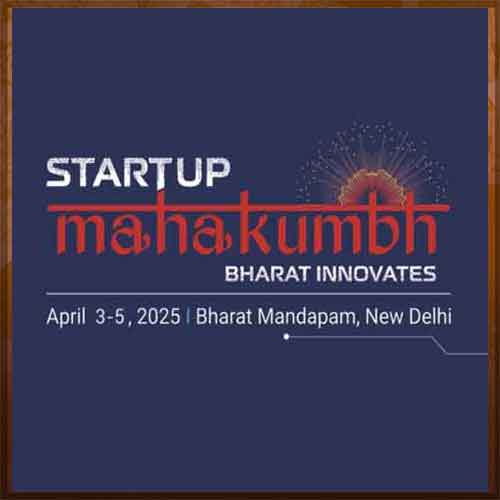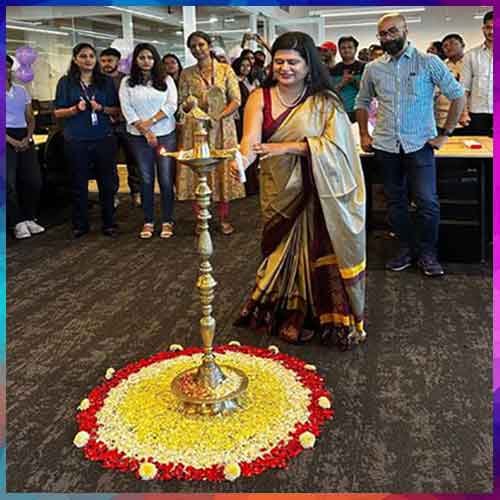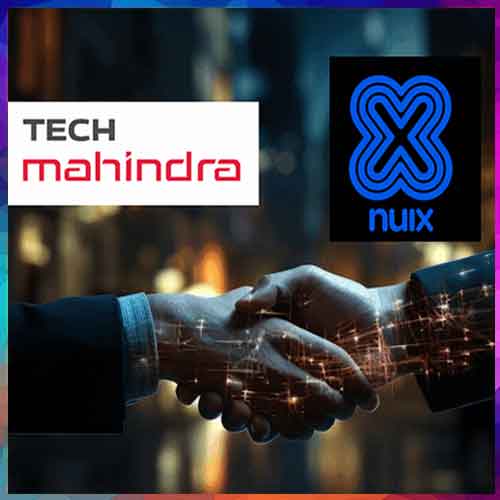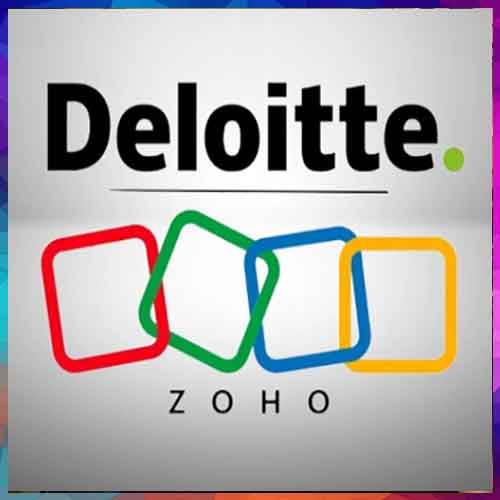20th edition VARINDIA INFOTECH FORUM: Remote Work and Digital Transformation to rule the roost
2022-08-26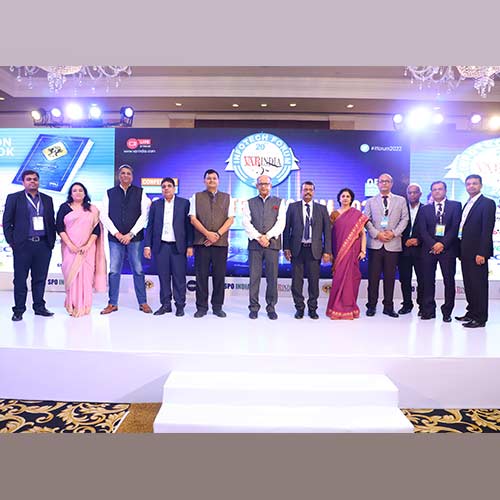
Manmohan Brahma, Manager - Solutions Architect, Amd India Mega Region. S. Mohini Ratna, Editor Varindia, Ashish D. Jain, Executive President & Chief Operative Officer, Polycab, Biswajit Mohapatra, Head- Customer Solution Management- Amazon, S N Tripathi (Ias), Director General-iipa, Government Of India, Amar Patnaik, Member Of Parliament, Rajya Sabha, Dr. Deepak Kumar Sahu, Editor-in-chief, Varindia, Karnika Seth, Cyber Lawyer & Expert- Seth Associates, Sanjay Kumar Das, State Information Security Officer & Joint Secretary, Dept. Of It & E, Govt Of West Bengal, Ramkumar Mohan, Cio- Air Works India Engineering, Harold D’costa, President- Cyber Security Corporation, Sanjeev Sinha, President - It & Digitization- India Power Corporation Ltd.
The 20th edition of the VARINDIA INFOTECH FORUM 2022 that was held in New Delhi on 5th August, 2022 was an eye-opener in many ways than one – it set a new benchmark for insightful discussions on digital transformation and disruptive trends that would drive the future. It also saw power-packed sessions of technical presentations, panel discussions and discourses on issues impacting the technology landscape and, most importantly business networking, nearly after two years of holding this prestigious event virtually because of the pandemic.
Having entered its 20th year, the hybrid event was designed around the theme – ‘Optimizing the world of remote work’. The forum was attended by 400 regulators, Policy makers, along with experts in technology, CIO/CTO/CDO and over 80 delegates from the OEMs. During the sessions there were various discussions on how the core technologies have created the new vision to think ahead.
The eminent dignitaries who were present at the event include Dr. Amar Patnaik, Member of Parliament, Rajya Sabha; Rajesh Aggarwal, IAS-Secretary- Skills Development, Government of India; S N Tripathi (IAS), Director General-IIPA, Government of India; Vijay Sethi, Digital Transformation & Sustainability Evangelist; Dr. Biswajit Mohapatra, Head Customer Solutions Management- AWS; Deepak Sar, Director (Distribution & Alliance) - Hitachi Vantara; Jagannath Sahoo, Head Service Delivery & Operation - Cyber Security- Bharati Airtel; Dipesh Kaura, General Manager (South Asia) – Kaspersky; Mohit Puri, Country Manager (India & SAARC) – SonicWall; Shri Sanjay Kumar Das, State Information Security Officer & Joint Secretary, Dept. of IT & E, Govt of West Bengal; Ramkumar Mohan, CIO – AIR WORKS India Engineering; Dr Mukesh Mehta, Group CIO, Monarch Networth Capital; Sandip Kothari, GM-IT, ORA Jewellery; Kapil Mehrotra, Group CTO- NCMS Ltd; Varundeep Kaur, CIO-Spice Money; Dr. Pavan Duggal – Cyber law Expert; Rishi Mehta, President & CEO - Waisl Limited; Prof Triveni Singh, Superintendent of Police, Cyber Crime, Uttar Pradesh; Rahul Singh, VP & Head of Marketing- SAP India; Naved Chaudhary, Head of Marketing- Ingram Micro; Prasenjeet Roy, CMO- NTT Global; Satyakam Jyotiprakash, Harmony Security Lead, India & SAARC- Checkpoint Software; Krunal Patel, MD - India & Middle East- Safe Breach; Manmohan Brahma, Manager - Solutions Architect- AMD India Mega Region; Tushar Mehrotra, Pre-sales Lead - Redington India Ltd.; Manish Gaur, Head-IT- Patanjali Ayurved limited; Dr. Lopa Mudraa Basu, VP ISM CyberSecurity & Technology Controls - JPMorgan Chase & Co.; Bharat B Anand, V.P –Technology, EC Council Group; Karnika Seth, Cyber lawyer & Expert- Seth Associates; Dr. Deepak Kumar Sahu, Publisher & Chief Editor, VARINDIA & Group of Publications; and S Mohini Ratna, Editor-VARINDIA.
In his opening speech, Dr. Deepak Kumar Sahu spoke about how digital technologies have advanced more rapidly than any innovation in the history of mankind. “Initially, a decade back we thought about how to secure and enhance productivity of the organisations but now we are seeing how technology has made communication unbelievably fast and convenient. It has paved the way for multi-functional devices like the smartwatch and the smartphone. With all of these revolutions, technology has also made our lives easier, faster, better, and more fun.”
Rishi Mehta, President & CEO - WAISL Limited presented the welcome address of the Leadership Summit in which he briefed the audience on the latest technology innovations that the company has. Pavan Duggal, Cyber Security Law expert was the next speaker, who shared valuable inputs on cyber security and laws.
Sanjay Kumar Das, State Information Security Officer & Joint Secretary, Dept. of IT & E, Govt of West Bengal spoke at length on Democracy in data governance.
In the corporate presentations, Deepak Sar, Director, Distribution & Alliance from Hitachi Vantara focused on the brand’s strong vision of aligning its partners and customer ecosystem towards a common goal of doing profitable business. Mohit Puri, Country Manager (India & SAARC) - SonicWall through his presentation highlighted how SonicWall is on the forefront of offering boundless security, analyzing every threat and cyberattack. Naved Chaudhary, Head of Marketing- Ingram Micro India spoke about how the company facilitated remote work and how the industry optimised it to its best use, while Dipesh Kaura, General Manager (South Asia) – Kaspersky spoke about the company’s premium protection products.
Sharing valuable insights, Prof Triveni Singh, Superintendent of Police, Cyber Crime, Uttar Pradesh explained how important it is to be extra cautious in this cyber world while sending messages and mails.
Dr. Harold D’Costa, President - Cyber Security Corporation enlightened the audience on various types of corporate frauds happening on a regular basis.
Satyakam Jyotiprakash, Harmony Security Lead, India & SAARC- Checkpoint Software shared many important security aspects that were worth listening to. Sabyasachi, CTO - SDG Corporation and Meetali Sharma, Head-Risk, Compliance & Information Security - SDG Corporation shared the stage to present their viewpoints on the evolution of Governance, Risk and Compliance functions.
Key highlights of INFOTECH FORUM:
• Technology Leadership Forum - 500+ Senior Leadership attended
• Policy makers, CIO,CTO & CISOs has attended
• Three tracks of Panel Discussion Sessions held
• Unveiling of the 11th edition of the Brand Book 2022
• Recognition of Top 25 Most Trusted Brands 2022
• Felicitation of 102 Eminent CIOs of India 2022
• 50 Most Admired Brands recognized
• 10 Most influential CMOs in India
• 5 Women in Technology Leadership 2022
The evening session commenced with an opening note by S Mohini Ratna, Editor-VARINDIA. In her speech she spoke about the journey of VARINDIA and Brand Book that have successfully been serving the Indian ICT industry for the last 23 Years. While delving into the theme of the event, she said, “Today's workers demand flexibility. Remote work also offers employees more flexibility and the ability to maintain a better work-life balance, which benefits companies in the long run. Some companies still believe remote work leads to waste of time and lack of productivity, but this old-fashioned stigma has been proven incorrect.”
The Chief Guest for the evening, Dr. Amar Patnaik, Member of Parliament, Rajya Sabha gave his keynote address in which he enlightened the audience with his insightful thoughts and ideas.
The last two corporate presentations in the evening were given by Tushar Mehrotra, Pre-sales Lead - Redington India Ltd. and Manmohan Brahma, Manager - Solutions Architect- AMD - India Mega Region.
S N Tripathi (IAS), Director General-IIPA, Government of India also addressed the audience with his inspiring speech, as well as Rajesh Aggarwal, IAS-Secretary- Skills Development, Government of India, who graced the occasion and shared a brief message with the audience present.
There were a total of three panel discussions held during the course of the full-day event. The Session – I panel discussion was around the theme ‘Ensuring a reliable digital connectivity to every Indian’ and was moderated by Dr. Deepak Kumar Sahu, Publisher & Chief Editor, VARINDIA & Group of Publications. The panellists who joined the session are - Vijay Sethi, Digital transformation and sustainability evangelist; Dr. Biswajit Mohapatra, Head Customer Solutions Management- AWS; Kapil Mehrotra, Group CTO -National Collateral Management Services Ltd.; Sanjeev Sinha, President- Digital Transformation, IPCL; Varundeep Kaur, CIO- Spice Money and Yogesh Dadke, APAC IT Leader - ADIENT India.
The second panel discussion of the 20th edition of the INFOTECH Forum was around the topic ‘Technology Is Getting Personalised Again’ which was also moderated by Dr. Deepak Kumar Sahu, Publisher & Chief Editor, VARINDIA & Group of Publications. The Session-II panel saw Chief marketing Officers and Head of marketing joining the discussion as panellists. They were - Rahul Singh, VP & Head of Marketing- SAP India; Naved Chaudhary, Head of Marketing- Ingram Micro; Nikhil Dudwadkar, Head of Marketing- Kaspersky; Prasenjeet Roy, CMO- NTT Global; Vinny Sharma, Director Marketing Asia Pacific Japan and ME- Securonix and Anita Kukreja, Head of Marketing & Channel Sales – IceWarp.
The third panel discussion was themed ‘Building a Cyber Safe India’, which was again moderated by Dr. Deepak Kumar Sahu, Publisher & Chief Editor, VARINDIA & Group of Publications. The panellists included CISOs/CDOs and security experts from the industry joining like Dr. Harold D’Costa, President- Cyber Security Corporation; Sanjay Kumar Das, State Information Security Officer & Joint Secretary, Dept. of IT & E, Govt of West Bengal; Bharat B Anand, V.P-Technology- EC Council Group; Subroto Panda, CIO- ANAND & ANAND; Karnika Seth, Cyber lawyer & Expert- Seth Associates; Krunal Patel, MD, India and Middle East – SafeBreach; Sourav das, CDIO - Aditya Birla Group Essel Mining & Industries.
The unveiling of the 11th edition of the VARINDIA Brand Book on the Indian ICT Industry was however the major attraction, which kept the audience glued to their seats. The Annual Coffee Table Book brings insights into the visionary leadership behind the featured brands: Chronicling the journeys, marketing and channel policy along with the GTM strategy of the Corporates and VARs that participated in the Brand Book.
The event also witnessed the recognition of 102 Eminent CIOs of India, India’s Top 25 Trusted Brands along with the country’s Top 50 Most Admired ICT Brands, the Most Influential CMOs and lastly the Women in Technology Leadership 2022.
There were also four lucky draws announced that saw winners from the audience winning many exciting prizes.
The event was supported by Presenting Partner Redington, Principal Partners Hitachi Vantara and AMD, Platinum Partner Ingram Micro, the Gold partner Snowflake and Checkpoint. In the Networking Partner category there are seven corporates – NEC, Sophos, Veeam, SonicWall, Rubrik, Viewsoinic and SDG Corporation. The cyber Security partner of the IT Forum was Kaspersky.
Key Takeaways
Digital transformation (DT) is a process of reinvention. It enables an organization to speed up the change process, make an Agile approach possible, and learn faster from consumers and competitors. Organizations are at different stages in the digital transformation journey, but speed has become a business imperative for all. DT is an ongoing process that shifts and evolves over time to meet both consumer and internal stakeholder needs. IT leaders (CIO/CTO/CDO) face pressure to show that digital initiatives continue to translate increased agility and speed for the entire organization.
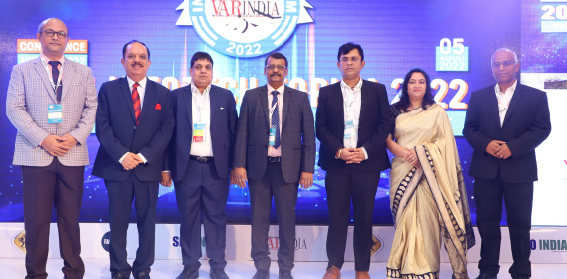
Sanjay Kumar Das, State Information Security Officer & Joint Secretary, Dept. Of It & E, Govt Of West Bengal, Vijay Sethi, Digital Transformation & Sustainability Evangelist, Biswajit Mohapatra, Head- Customer Solution Management- Amazon, Dr. Deepak Kumar Sahu, Editor-in-chief, Varindia, Mohit Puri, Country Manager (India & Saarc) - Sonicwall, S. Mohini Ratna, Editor Varindia, Manmohan Brahma, Manager - Solutions Architect, Amd India Mega Region
SPEAKERS AT INFOTECH FORUM
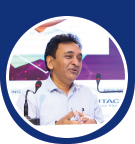 Rajesh Aggarwal
Rajesh Aggarwal
IAS-Secretary- Skills Development, Government of India
“I see the actual application of the phrase that Software is eating the world. And here Software is eating 80% of my job roles in the sense that every student in this country wants to join the IT sector while 80% jobs are in other sectors, they have become non aspirational. Every student in the country wants to do IT jobs only. So that is one problem I grapple with. Every student is joining some IT course; at the same time the IT industry is grappling with the reverse problem. After doing an IT course, when a student wants to join the industry then he/she is not industry ready. Students come from any college, ITI or NIIT but the industry people are of the opinion that they are not employable.
Students with four years of coding knowledge join Infosys and TCS and the companies need to train them again. So the only solution is that industry people need to shake hands with the colleges, universities, ITIs. Now the system enables industry people to join as professors of practice and teach the students, so that courses become more relevant. So our students are spending a lot of money and effort in the IT courses and still the industry says they are unemployable and have to re-train them. So it is time for industry people to move into these institutes, become teachers, upgrade the labs so that companies do not have to set up their own labs for training. As a skill secretary, I would be very happy to shake hands with any of the partners or companies. And if you want any sort of collaborations with AICT, UGC, colleges, universities, skill universities, I would be very happy to associate with the companies and make that happen also, because this is a perennial problem. There are two problems, one, everyone is doing IT, which is detrimental for the country and that 80% of job roles are in other sectors as well. Second, those who are joining make them employable, so that companies do not have to re-train them. So let's shake hands.”
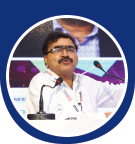 Prof. Triveni Singh
Prof. Triveni Singh
Superintendent of Police, Cyber Crime, Uttar Pradesh
“With advancing technology, cyber criminals are also getting smarter technologically. Every day we get SMSs of part-time jobs or instant loan applications etc. Nobody can expect that an SMS can be a big crime where people lost Rs 50,000 - Rs 2.5 lakh and if we calculate it for the entire country, then it will be a huge amount. To regulate the bulk SMS industry, the Department of Telecommunications has come up with a DLT platform. It is a blockchain based platform and is formed to control cybercrimes. People receive an SMS which reads - Flipkart is urgently recruiting and mentions the maximum daily salary. A victim also received such an SMS and filed an FIR as the lady lost Rs 2.2 lakh. If you want to send bulk SMS then you require three things, first you have to have an entity – it can be an individual, firm etc. and it should be registered. If the entity wants to send bulk SMS then it asks for a code from the telecom operator and for this, documentation must be submitted. According to government policy, the text of the SMS must also be validated, verified and approved. If anyone searches for part-time on Google then the paid advertisements appear first and the cyber criminals are taking advantage of that. The link opens to a WhatsApp number and the chat starts and they take it to Telegram and provide a virtual payment address and ask for some amount that will get doubled etc. Lakhs of cyber criminals are running paid advertisements on Google and their links appear first on the search engine. Thousands of people are thus becoming victims of such malicious ads.”
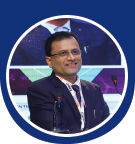 Dr. Harold D’Costa
Dr. Harold D’Costa
President - Cyber Security Corporation
“In the last 15-16 years, I have worked with various law enforcement and judiciary agencies and one of the cases which struck me was just a couple of months before. I want to make you aware that emails can be as expensive as 450 crores of rupees. This is probably the first case in the country, a corporate fraud worth Rs 450 crores, where an email played a significant role. So, Company A and B collaborated to form a private limited company as Company C. Company C had five directors, of which three were from Company B and two were from Company A. Company A happened to be the investor as well as one of the stakeholders of the management of the organization. Company B was a process oriented company – the investments coming from Company A would be used by Company B and the profits would be distributed according to the proportion mentioned in the agreement. During the Board of Directors meeting, as per a resolution passed an individual management team should be selected and that Company A should not be held liable for any project delays. This proved to be a very critical point in how Company A later made allegations against Company B for a project delay, which finally cost the latter Rs 450 crores. In the last decade there was a huge spurge in cybercrime. Digital crimes have increased as we have now become more digital. A total of 3,367 banking frauds had been reported way back in 2007-2008, which rose to 83, 638 frauds between 2016 and 2021. This has significantly increased with the use of more digital technology. Talking about corporate fraud, there has been a significant amount of increase in the last couple of years. According to a survey conducted by the Economic Intelligence Unit published in Business Today, India has the highest number of companies where corporate frauds, bribery and corruptions take place. Going ahead, the top three changes required for better fraud risk management are technology investment towards an enterprise view of fraud, enhanced third party due diligence and greater employee awareness of fraud. Around 50% of corporates indicated that they would prefer to take legal action against parties involved in fraud.”
 Dr. Amar Patnaik
Dr. Amar Patnaik
Member of Parliament, Rajya Sabha
“We have been of late engaging with the Indian as well as the multinationals and also the small entrepreneurs in relation to the competition law. Listening to all of them makes me realize the value of regulations. When we are talking of IT or IT-enabled services, whether it is using AI, ML or IoT, they are growing rapidly. The regulations have therefore become a challenge. So what is basically the challenge? The three important things any regulations should take into consideration would be – 1. Protection of the citizen; 2. Ensuring that the fair market develops and complying with regulations; 3. Promoting innovation. Gone are those days when regulations were based on control methodologies, but it has to take care of these three pillars. These three pillars might sometimes contradict or sometimes overlap with each other. So what kind of regulation would deliver all that we discussed? We can talk about Security by design, Privacy by design and even Human Rights by design. Since a lot of activities of citizens are now being read into Article 21, which is Right to Life and a Fundamental Right, you realize that the primacy of all the regulations have to be eventually the citizen. Particularly in the Indian context, because it is a fundamental right, which is the basic structure of the Constitution, it cannot be taken away under any circumstances whatsoever. In several jurisdictions outside the country, it is possible that several of these rights are given statutorily by passing legislation. While saying all these, we must also realize that there are reasonable restrictions or exceptions to this fundamental right and it is within that domain that whatever exemptions or extra regulations that are required to be put in the interest of the sovereignty of the country or national relations, should be brought in. Therefore, on one hand we have technology galloping at a speed unseen before, where we have Web 3 applications coming in where jurisdictions don’t matter anymore. Even if we need to pinpoint transgressions, the questions prosecution is a problem in a peer to peer kind of a protocol. This is happening with crypto, even in a public blockchain and also several of the blended or bundled products that are coming in.”
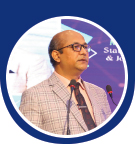 Sanjay Kumar Das
Sanjay Kumar Das
State Information Security Officer & Joint Secretary, Dept. of IT & E, Govt of West Bengal
“When we attend any conference or meeting, we are asked to register ourselves by submitting our name, email id and phone number and the organizers reason with us saying that it will be used for internal purposes. But what if the information is misused, and there are higher chances that they can fall in wrong hands. Many a time, we are asked for our Aadhaar number too, which amounts to handing out our identity. We often face this dilemma of whether we should give out our personal details or not. In data governance, if you want to bring democracy, you need to abide by certain principles. If I do not require, I need not collect such data. Just imagine, all those registers lying there, anyone can go and take a snap. Corona has made us visit a lot of doctors in the last two years. All your records are online nowadays and just by logging in your name, the doctor will come to know whatever medical conditions you have. This is both a boon and a bane. Today is the world of shared data and shared existence. I have learnt from my experiences that whenever you take a personal snap with your mobile phone and you have given an n number of apps and platforms access to your personal photo gallery, there is nothing you can call private in your life. When people say that their private information has been exposed, they forget that they had allowed those things to be shared with the apps downloaded on their phones by ticking on the ‘Yes, I agree’ button. This is called Clickwrap Contract. The Honourable Supreme Court said that the Boilerplate on the Clickwrap contract cannot be hailed against by the user. So you need to understand what you need to know, and there is a decision to be taken on whether we require you to sign on such agreements or not. You should understand that some data are required for identification and verification while some other huge amounts of data are required for promotion. So Privacy is our fundamental right and has been upheld by the judgement of the Supreme Court as in Justice K. S. Puttaswamy case.”
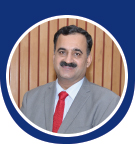 Pavan Duggal
Pavan Duggal
Cyber Security Law expert
“It is a different world altogether. When I talk about the cybersecurity landscape, what hits me is that in the last 24 hours, we have seen a U-turn by the Govt. of India. After five years of working on the Personal Data Protection Bill, they decided to unilaterally withdraw the bill. All those many hours, months, years that went into deliberating it, first in the form of the Justice Srikrishna Committee and thereafter the report from the joint Parliamentary Committee have all come to a grinding halt. As the government says, it will come up with a new law now. That is one side of the perspective. On the other hand, the govt. is clearly saying that the old law was not sufficient and comprehensive enough and therefore there is a requirement of a new law which is going to cover not just personal data but sensitive personal data. So now you are going to be prepared for a new ecosystem. Let’s be prepared for a humongous legislation that is now going to come up and the need for tightening our belts is going to be very high. So there is going to be a scenario where there is going to be two hemispheres – one is the corporate hemisphere, who will have to comply with these new laws on data protection and there will also be a new hemisphere of government organization who may be exempted from such legislation. There is no denying the fact that India is at a very interesting, contrasting, tough 2023; it is going to be seen as the most populous nation in the world. But the scenario is – are we prepared? Look at the concerns all round. Security appears to be the single factor that is predominating almost all news jungle of cybersecurity. This is the age where cyberattacks are the new normal. Attacks are happening across all governments and the mission critical infrastructures over the world. Clearly India is no exception. A political spokesperson of a political party gives out a statement and that results in a humongous amount of cyberattacks. The government networks, websites and even the corporate websites all come under attack.”
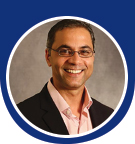 Rishi Mehta
Rishi Mehta
President & CEO - WAISL Limited
“WAISL is an end-to-end technology partner for the airport ecosystem. We manage all the technologies at the airport like kiosks, printers, wi-fi, small cells, databases, CCTV cameras as well as new technologies like biometrics, facial recognition systems and we run them 24x7. This is a hard-core operation for us and this is aided by a lot of digital transformation and intervention that we continuously do spanning IoT, analytics and automation. We supply technology and do end-to-end operations in multiple airports like Delhi Airport, Hyderabad, and the upcoming Goa airport and even overseas like Kuwait. Our technology supports up to 100 million passengers per annum, so that shows the power of how we need to keep our technology up and running through both good and bad times. We need to ensure that the endpoints and networks are continuously running and that there is a good passenger experience. When I say airport, I just don’t mean the mainstream airport but it refers to the entire ecosystem at the airport - the cargo, retail, the parking and the smart airport cities that are being developed. We are a technology and a solution partner for all these different verticals part of the airport ecosystem. The airport is one example of an enterprise. So whether you look at healthcare, universities, corporates, manufacturing, customer experience has become paramount, where they do care about personalization and that is how they are able to connect with businesses. Now to offer very good customer experience, a business needs to think through certain pillars on a continuous basis and one of them is continuity. The business has to ensure that they are operational all the time despite the different cyberattacks that we see. Productivity and efficiency are the name of the game. Each business is looking at growing their topline, but it also becomes important at the same time to look at the bottomline and to make the operations efficient. That is basically how you are able to offer value to your customers. Finally, we live in a world where customer demands are rapidly changing; as a business you will have to evolve while being flexible and agile.”
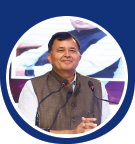 S N Tripathi (IAS)
S N Tripathi (IAS)
Director General-IIPA, Government of India
“One thing I have always seen and felt is that we are seeing the rise of Artificial Intelligence but witnessing the decline of real intelligence. We all are moving very fast and the government is also adopting digitalization at a fast speed. We can see how edtech is transforming the government and education sector. Today for the first time India can boast that we have got applications which are world class - be it UPI, COWIN and many more. We all were listening to the story of Microsoft, Google etc. but today at least we have got some products which we can say that they are giving a run for their money to the outside vendors and developers. We are also expecting from the IT world how we can make the lives of citizens easy. We are no longer satisfied with constitutional democracy where we the people are good enough. We the people have migrated and want to be treated as I the citizen. From ‘we the people’ to ‘I the citizen’, this migration is not only a change of operating system but we have to also deal with the information itself.
Today, we have come full circle that our own data protection Law has been withdrawn because we wanted to solve all the problems with one Act. We all know that privacy is a different word and marketing commerce is a different word, so is the digital market. India cannot sort it out in one law because earlier citizens were opting for the country. Today, big tech companies are opting for which law they will abide by. Obviously, they will go with the softest law. They can register and re-register in the countries where the law and legal regimes are favourable to them. You will see how companies are shifting, how FIIs and other things migrate, how capital moves at the speed of light. Any government of the day will be worried. So we have to handle those things in a very cogent manner."
CORPORATE PRESENTATIONS
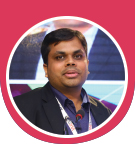 Manmohan Brahma
Manmohan Brahma
Manager - Solutions Architect, AMD India Mega Region
“Data centers are a huge topic today. From edge to data center and to cloud, AMD has made a significant presence. We are accelerating high performance computing. There used to be a time when people used to talk about high performance computing which means multiple systems connected together or a kind of system which are not affordable by the common people. In 1993 the first Super Computer was announced.
AMD has brought in significant innovations in terms of the process note technology in the form of CPUs, accelerators like General-purpose computing on graphics processing units (GPGPUs) from gaming or from high performance computing and then we have got Xilinx as FPGA on our portfolio. From edge to cloud the journey has been very significant. In today's world, you touch any equipment that has a processor and in most you will find an AMD processor. The ultrasound machine, the scanner contain an AMD processor. If you violate a traffic signal you get a challan at your home. Have you ever thought of how the calculations are made, the photographs are taken and then an analysis has been performed on that particular violation and then you get a challan, so that is the power of Analytics, all that happens within a fraction of moments. Now a photograph is taken, stored in an edge station, sent out to a Cloud station for processing and then the next course of action happens. 5G is the next revolution, as the new spectrums were auctioned by the government. 5G is the next boom. Almost all of our telecom service providers are very much geared up with that infrastructure. So we have partnered with all our telecom service providers to provide infrastructure background. At present in 4G, the bandwidth on your phones is like 35 Mbps and in case of 5G it is somewhere around 300 Mbps. So that is the power of the new spectrum. But how exactly will that data move? AMD brings a significant contribution with high performance storage, high speed networks, accelerators and with the CPU put together we get a great level of user experience.”
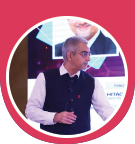 Deepak Sar
Deepak Sar
Director, Distribution & Alliance - Hitachi Vantara
“There is a gentleman in the Indian IT industry who once said that data is the new oil. But I don’t buy that statement, as I don’t consider data to be the new oil. It is my personal opinion that data is the sun, as oil can get depleted after a point of time. But the sun is the constant source of energy and so is data. Secondly, data is the King, as everybody is in search of more and more data. The richness of an organization or the richness of any of the unicorns that we have right now is determined by how much data they are in possession of or how much of a transaction they are doing. So it is data that everybody is talking about. It was good to be data rich at one point in time, but it is no longer. The time has moved from being data rich to being data driven; which means deriving the competitive advantage of your businesses through data or deriving the societal or environmental impacts to the society that you are working with through the data is what is known to be data driven. Big Data driven is the future. People have started to do remote working - 87% of the people are working remotely right now. All the customers that we work with, they expect us to be available 24x7. That is being driven by the digitization that we are going through right now and the core of the digitization is the data. Data driven is going to drive the advantage in the industry tomorrow. These are the key market trends that Hitachi Vantara looks at right now. Today Cloud is all about opportunity and challenge. The challenges are – you have to go through the app migrations, the data migrations and follow the security and the management procedures. The opportunity is - the data becomes ubiquitous and is available to you every time. You are able to access that data and work on it from the perspective that you want to. Data is going everywhere – this does not include the unstructured data that is on your mobile. I am talking about the enterprise data that is getting into the cloud and getting distributed. In the terminology of the IT industry, they have come to call them as Edge Datacenters, which are becoming a reality today.”
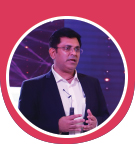 Mohit Puri
Mohit Puri
Country Manager (India & SAARC) - SonicWall
“The last two and a half years, we have gone through our journey of both good and bad times. People have lost their near and dear ones, but nevertheless going strong from strength to strength. Going forward, our approach will be absolutely boundless. We cannot be working from one single console like we used to do. You are no longer required to go back to the office and your work starts wherever you are and your laptop is. The IT landscape has changed and there is a whole paradigm shift. The prime focus is to secure ourselves, our networks, and data; that has been on the top of SonicWall’s mind. We also have been facing a lot of challenges, whether it is distributed IT reality or explosion of the exposure points, or the cloud which is becoming very pervasive. There are a lot of cloud transformations happening. We are seeing a lot of customers transforming from on-prem to cloud because of lack of good resources. They want to leverage the cloud platform. On top of that there are a lot of compliances and regulations. These are some of the things that are ruling the world and are some of the challenges that we are facing now. Besides, we have arrived at a situation where everyone is mobile – they are using their tablets, laptops, mobile phones. You can today take a Teams call from your mobile phone; not only that, the world has come to a situation where you are managing your whole household and your office at the same time. This is also giving the hackers a wide platform to attack you and you have become more vulnerable. So the bottomline is - you need to be secured. At the same time, there is a cyber arms race that has reached a tipping point, where your infrastructure is full of vulnerabilities. You are going through your own challenges of managing your data. Cyberattacks are at an all-time high and are increasing – ransomware, crypto-jacking attacks and so on. You want your security posture to be in line with your entire cybersecurity infrastructure. If you miss out on anything that could cause you a lot of damage.”
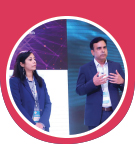 Sabya sachi, CTO - SDG Corporation and Meetali Sharma, Head-Risk, Compliance & Information Security - SDG Corporation
Sabya sachi, CTO - SDG Corporation and Meetali Sharma, Head-Risk, Compliance & Information Security - SDG Corporation
“Governance, Risk and Compliance functions can evolve to play a key role in making organizations cyber resilient. The industry is also evolving to extend the GRC function from just being a compliance exercise to help share insight with management to enable them to take right decisions, prioritize it for the first line of defence to match the speed of threat that we experience every day. Since the pandemic has struck us, we have seen cybersecurity attacks and threats coming in like ransomware, insider threats. Ransomware attacks have contributed the most of all the threats. This means that the cybersecurity and the GRC teams now have a dual role to play. They have to ensure business continuity besides ensuring that their business operations are going on as usual and the data, both their and their customers, is protected. It is time now that organizations have to think of controls which can lead them to cyber resilience. Looking at the evolution of GRC, businesses today do not function the way they did some time back. Gone are those days when people were sitting within a firewall within a closed perimeter and working on some data accessible to only some insider staff. These days the customers, the suppliers, the third party – they all have become the logical network extensions or the logical workflows. And they will have the access to the same data that a person would have had within the closed perimeter. This means that the data has become the new oil and also security has become of paramount importance. What it also means is that from network security, the focus has shifted to data security, compliance driven GRC has moved to risk focused GRC. What we see in the future of GRC is that it will be driven where the organizations would have a unified and holistic insight of the threat landscape of their organization.”
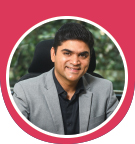 Dipesh Kaura
Dipesh Kaura
General Manager (South Asia), Kaspersky
“73% of the cyberattacks are related to cybercrime and when we talk about cybercrime, we are typically talking about things which are related to either data exfiltration or loss of money, or both. The next level of attack, which is the targeted attack, is at 18.9% and it is about 130% growth since 2019 in India. APT, which is the most lethal attack that the cyber world witnesses today, comes from the APT side, which is where attacks are more state and government focused, intended to create physical and strong damage.
Ransomware as a service in the last two years has evolved more than ever before. Today, you can actually lease out a ransomware group for a fixed rent on a monthly basis and they promise you a return of investment. It also came out very recently that they also give you a money back guarantee. So this is the kind of attack market which is growing today. If you look at it from a cyber maturity perspective, Kaspersky is bringing out the kind of solutions that go into an organization to create cyber resilience, cyber maturity or cyber immunity. Immunity is hard to reach but we are still getting there.
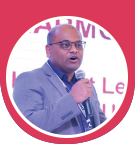 Satyakam Jyotiprakash
Satyakam Jyotiprakash
Harmony Security Lead, India & SAARC, Checkpoint Software
“If we look at our users - the employees or the third party who are connecting to our IT infrastructure, either they are working from home, working on the go, or they are coming to the office a couple of days in a week. These users are basically connecting to the internet; they need SaaS applications, they are having workloads in the cloud, datacenter, while some remote desktop connectivity and internet connectivity are also required. Before the pandemic or during the pandemic, everybody tried to look into a lot of solutions. There are multiple solutions available in the market, which will solve different kinds of problems, be it securing the devices, endpoints, mobile phone, emails, the overall access connectivity part etc. It is becoming a little bit complex as we have multiple solutions which are coming together and we do not necessarily have a unified view of what they are providing to us.
That is when Checkpoint has decided to come up with this portfolio called Harmony. This is a combination of various products and solutions which are designed for the work from home population, for the remote users and of course for those users who are coming to work from offices. So we provide a zero trust security for them, irrespective of where they are working from. So Checkpoint provides solutions across endpoint security, Zero trust corporate access, secure internet access, email and collaboration tools and mobile devices. With this, what we have basically done is we have understood the problems of the organization and we got a unified solution which is simple from a licensing model point of view, consolidated six different products coming together to address all the requirements around remote workforce. The beauty of Checkpoint is the unified management that we have and with this infinity management you can manage all these kinds of products and solutions, be it from an email, endpoint, access perspective, SaaS model and mobile security. All these management can go into one single unified dashboard from where the admin can very easily gain visibility of what is happening. And of course it is a simplified commercial model, which I think is required in this current scenario.
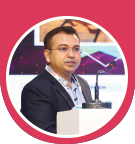 Tushar Mehrotra
Tushar Mehrotra
Pre-Sales Lead, Redington India Ltd.
"Redington is into products, services and solutions. One of the top notch distributors as far as the entire gamut of IT products, solutions, smartphones are concerned, we are into a lot of things like enterprise, professional services, managed services, logistics, support services and 3D printing etc. We have built a huge network and relationships covering more than 300 brands and over 40,000 channel partners. We have presence in almost 31 countries and if we specifically speak about global markets, it is 38 countries.
We are revamping our Cloud space big time. Our portfolio of cloud services, specifically cut across almost all the industry segments BFSI, healthcare, government initiatives like smart city, data center migration, media and entertainment, manufacturing. We are doing a lot of migrations as far as the ERP migration is concerned to the cloud, moving manufacturing customers who have their own data center and want to start their cloud adoption journey. There are also bundled solutions for the SMB segment, mid-market segment, education - digital classroom and virtual labs. So this is our whole gamut of cloud services which we are actually catering to and we strive for being the industry leader with the digital first approach.
Moving on to the strategic relationships, we are Advanced Consulting Partner of AWS and recently we have certified the migration competency review. So we are deep diving into the map programs from the hyper scalars, specifically from AWS. We are Gold Partners of Microsoft Azure, largest SAP on Cloud partner, Silver Partner of IBM and Platinum Partner of Oracle. Recently, we had a partnership with Google, which is the only partnership of a distributor in India.
We are adept in advisory and consulting. We are into business development where we lead and demand generation, CLM - customer lifecycle management. We have a Cloud Academy where we run a lot of accelerator programs, training, enabling and helping our sales people to do a lot of solution selling so that they are technically enabled to have good fruitful technical conversations with the esteemed partners and the customers. Apart from that, we have a mini CoE of Cloud migration services. Migration actually runs on a factory driven approach which we have curved out, be it lift and shift that is re-hosting on the cloud, SAP on Cloud, Microsoft 365 migration. Apart from that, we have an excellent digital platform, which is in production right now and you can do a lot of self-service from there. So you can have an auto cataloguing, Payment Gateways integrated, subscription and management. So it is an excellent platform and we are revamping it with loads of additional features. It is a one stop shop for everything and a single pane of glass."
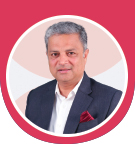 Naved Chaudhary
Naved Chaudhary
Head of Marketing, Ingram Micro
"As we all know that technology is at the heart of any remote work initiative we are taking. Without technology it may not be possible and clubbing with the internet is what the solution that we are giving to the larger audience. In the last two years during and after the pandemic we have seen the changes it brings to the table. We moved to virtual conferences and after a few months we realised it's not going to do well and we have to change the way we operate in terms of engagements. Then a lot of solutions, hybrid model and a lot of things came in. We keep a tap of it and offer relevant products. During the pandemic and after that the companies have completely changed the digital strategy. There are more people within marketing and organizations are into the digital space. Nine years back the marketing spend which used to be four percent is moving to 20-24 percent with some of the categories spending upto 50-70 percent also. The Internet and technology is transforming businesses across the globe.
Our design house is in Buenos Aires. Now because of the digital world we interact with them and we are providing services to different vendors, partners in India by using their expertise and the collaboration has been really great. Similarly we are also providing services from Australia and Philippines too. So things are completely changing in terms of products and services too. We are distributors but we have a lot of things layered to it. We are bringing a lot of value additions to the table. We are giving digital space to the partners and we have even gone to a level that we are creating social accounts for partners and running campaigns for them.
There are smart technologies which are helping to optimize remote work. We have Cloud computing and it is intensified by the right set of tools for remote work. Unified Communication helps communicate remotely in real time. IoT and AI, these potential technologies are paving the way for VR and AR. So all these things are clubbing together and individually also helping us drive the optimization of remote work."
Panel Discussion Session - I
Ensuring a reliable digital connectivity to every Indian
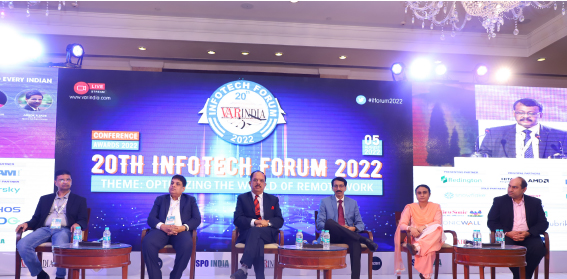
The first panel discussion was moderated by Dr. Deepak Kumar Sahu, Editor-in-Chief, VARINDIA & Group Publications. The panellists hinted at the idea that as businesses continue to evolve at an ever-increasing pace, the adoption of digital technology will only grow in the coming years.
 Varundeep Kaur, CIO - Spice Money spoke about how CIOs are the most capable and competent people. “The role of the CIOs have actually transformed into not only being part of technology, but they have to play the role of digital strategists. They have to be the business partner, they have to be a partner for enablement of business models, as well as being the most trusted adviser to the business. Besides, all the product management and delivery also lies on the shoulders of CIOs. In the two years of pandemic, we have transformed the way we have been doing technology. CIOs are the most capable and competent people of marrying off digital technologies with the business objectives and goals. So we adopted certain technologies like Design Thinking in order to improve on what we are going to deliver in future. Along with that, choosing the right technology is also important.”
Varundeep Kaur, CIO - Spice Money spoke about how CIOs are the most capable and competent people. “The role of the CIOs have actually transformed into not only being part of technology, but they have to play the role of digital strategists. They have to be the business partner, they have to be a partner for enablement of business models, as well as being the most trusted adviser to the business. Besides, all the product management and delivery also lies on the shoulders of CIOs. In the two years of pandemic, we have transformed the way we have been doing technology. CIOs are the most capable and competent people of marrying off digital technologies with the business objectives and goals. So we adopted certain technologies like Design Thinking in order to improve on what we are going to deliver in future. Along with that, choosing the right technology is also important.”
 Vijay Sethi, Digital transformation and sustainability evangelist
Vijay Sethi, Digital transformation and sustainability evangelist
highlighted that today’s CIOs ensure business continuity and business survival. “Since ages when IT started, as a CIO it is your objective to put in technology investment and the company has to get value out of it. From that perspective, the role remains the same. The second difference which has happened over the last few years is all of the businesses have now become digital businesses. The strategy of a business is now being driven by digital. If a CIO has to be the central nerve for the digital strategy of the organization, the CIO has to first understand the business and play a role in each part of the business.”
 Kapil Mehrotra, Group CTO, National Collateral Management Services
Kapil Mehrotra, Group CTO, National Collateral Management Services
said that the right strategy, investment and the mindset helps to design a plan to success. “Whenever we talk about digital, it requires investment and whenever we start talking about investment, then your strategy will start shaking it down. Then all of a sudden it will go in a phased manner. Generally whenever we talk about digital, it has to be a long term plan of about three years. You should have a firm mind about all the things you are going to expose. That is another strategy because on one side you are thinking of acquiring the new clients, or building a new application strategy in place; on the other hand you have to rework on the applications that you are having at the back end.”
 Sanjeev Sinha, President, Digital Transformation, IPCL
Sanjeev Sinha, President, Digital Transformation, IPCL
said that CIOs are becoming the change agents to transform the organization. “The role of CIOs has actually undergone a sea-change. CIOs have become important during the Corona time, thanks to the various digital requirements which are no more a choice but mandatory requirement for all companies. Organizations today look at the CIO as being the change agent, which allows the organization to work normally during these difficult days. Many of the organizations have worked well and many of the organizations have changed over the couple of years.”
 Biswajit Mohapatra, Head Customer Solutions Management, AWS
Biswajit Mohapatra, Head Customer Solutions Management, AWS
stressed upon how CIOs’ role has changed with time and became four dimensional. “We have to understand first how the industry has changed before the role of CIOs. Today the transformation is organization driven not because of business pressure but there is evolution of new business models, new way of working, building restless talent etc which all culminate in the response of a new age CIO. The measurement of CIOs has become four dimensional. The first parameter is all about outcome; the second parameter is all about health; the third is all about agility and the fourth parameter is services.”
 Yogesh Dadke, APAC IT LEADER, Adient
Yogesh Dadke, APAC IT LEADER, Adient
spoke about how his company is enabling the innovative parameters to get the CX Index up. ““From the organization point of view, we are an automotive car seat manufacturing organization. The important thing for us is to follow the OEMs. On top of it we have to add value by enabling the innovative parameters to get the Customer Satisfaction Index up. 78% of our body in the car is on the seat. It is therefore our job to provide safety and comfort. We also work on metal, foam, fabric testing etc, where engineering IT driven innovative aspects come into picture.”
Panel Discussion Session - II
Ensuring a reliable digital connectivity to every Indian
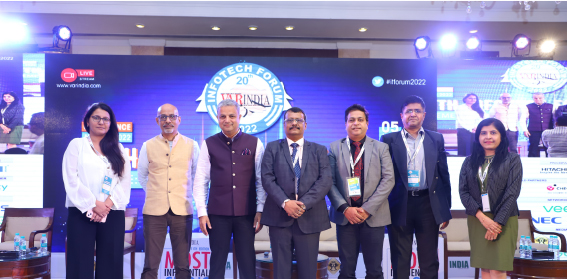
The second panel discussion reiterated the fact of how in order to stay relevant in today’s hypercompetitive marketplace, personalization with the help of technology becomes a critical strategy for current and future success.
 Prasenjeet Roy, CMO- NTT Global
Prasenjeet Roy, CMO- NTT Global
stressed that customer experience is going to be the key differentiator. “Customer Experience (CX) is a key thing that's going to differentiate the business in the near future. The three factors for customer experience are the role of marketing, personal development and end-to-end mapping of the journey. Companies have associated that the growth margin of the business will attain success in CX. The companies need to look at customer obsession and that is the only way going forward. Another thing they can do is create the end-to-end mapping journey. The real mapping journey starts after you acquire the customer. Very few companies really focus on that. CX in a company is not only confined to marketing, which is the enabler. The second element is a designed path which ensures how you capture the customers’ sentiments. Third is the delivery part where companies need a lot of channels like Omni-channel.”
 Anita Kukreja, Head of Marketing & Channel Sales - IceWarp
Anita Kukreja, Head of Marketing & Channel Sales - IceWarp
IceWarp said that brands should hand-hold the customers to achieve long-term goals. “Every brand looks at the ultimate customer experience that comes on the ground. It is about the journey that is mapped right from the beginning. If somebody visits a website, the time we take to respond back to a customer or a prospect is very important. Right from that point the customer experience journey starts and right up to beyond the sales it happened. But it does not end there. After you have received a sale or you have on-boarded the customer, it continues beyond that.”
 Nikhil Dudwadkar, Head of Marketing- Kaspersky
Nikhil Dudwadkar, Head of Marketing- Kaspersky
remarked that CX journey continues with the support of the organization leaders. “Customer Experience (CX) journey in marketing terminology involves automation or machine learning tools that marketers use for customers. To achieve this, understanding has to come from IT Heads on how to take this journey through tools. The three stages envision, design and delivery are present across the journey whether it is a new customer or an existing customer. Most of the time marketers are pressured primarily by new customer acquisition or ROI but it is also important to invest into technology, personalization, AI and automation. . It is a very critical part for marketers as well as for the entire organization. Make sure that the journey continues with the support of the organization leaders”
 Rahul Singh, VP & Head of Marketing- SAP India
Rahul Singh, VP & Head of Marketing- SAP India
believes that cross-functional expertise is needed to achieve personalization. “Very often personalization is kind of really relegated to the front office of the marketing folks to achieve, but it is really a cross enterprise endeavor because of all the technology that is available today. Maybe 15 years back, just being able to send an email with the first name and second name was personalization in B2B marketing. With the advent of technology you can customize products, services etc; it requires cross functional expertise and above all involves mindset across the organization to achieve personalization.”
 Vinny Sharma, Director Marketing Asia Pacific Japan and ME- Securonix
Vinny Sharma, Director Marketing Asia Pacific Japan and ME- Securonix
said that team work ensures reaching the objective of the organization. “Whether it is a CIO or CMO, all have to work together as a team. I might envision this is the roadmap I have for the organization but if I don’t have the support of others then we won’t be able to reach the objective we are coming forward with. We might have our own set of views but we all envision reaching one common goal - the objective of the organization.”
 Naved Chaudhary, Head of Marketing- Ingram Micro
Naved Chaudhary, Head of Marketing- Ingram Micro
contended that brand loyalty should be created. “We are sitting on lots of data; only marketers cannot do anything with it, it needs a joint effort by CIOs, CEOs, CTOS, and marketers as well as the sales function. The data has to be nurtured; we have to keep a tab on the buying behaviors and other elements as well that help you to go back with an experience model. If we work jointly, we will be able to give a seamless customer journey and maintain loyalty.”
Panel Discussion Session - III
Framework for improving and building a cyber safe India
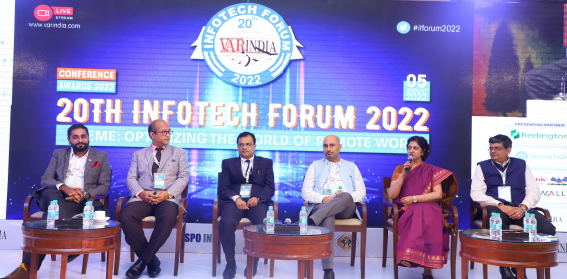
The third panel discussion of the day was moderated by Dr. Deepak Kumar Sahu, Publisher & Chief Editor, VARINDIA & Group of Publications. The discussion tried to establish the fact of how the industry has to find a way to cooperate so that cyberspace remains a driver of economic prosperity of nations and a cloud where people from all countries can safely interact and exchange goods and services.
 Highlighting the fact of how important it is to have a clear convention on cybercrime, Karnika Seth, Cyber lawyer & Expert- Seth Associates said, “Talking about trans-border crime, particularly when there is an increase in ransomware attacks or other kinds of crimes, which are mostly even involving other countries, not just India alone, there is a need to have a clear convention on cybercrime. Second is that looking at the government position at this point, where it is inclined to have more investments into India, we have the latest ways in which the government has taken a stand on introducing new regimes. It is important to balance not only the investment climate of the country, but also protect the indigenous goods and services and the cyber ecosystem. Therefore, the law makers, legislators, enforcers and cybersecurity practitioners, all have to contribute to this in a multi-faceted way. The roadmap has to have a synchronization from all angles, and therefore there is a need to step up our laws and keep a strategic view to protect our Indian markets and local productions at the same time.
Highlighting the fact of how important it is to have a clear convention on cybercrime, Karnika Seth, Cyber lawyer & Expert- Seth Associates said, “Talking about trans-border crime, particularly when there is an increase in ransomware attacks or other kinds of crimes, which are mostly even involving other countries, not just India alone, there is a need to have a clear convention on cybercrime. Second is that looking at the government position at this point, where it is inclined to have more investments into India, we have the latest ways in which the government has taken a stand on introducing new regimes. It is important to balance not only the investment climate of the country, but also protect the indigenous goods and services and the cyber ecosystem. Therefore, the law makers, legislators, enforcers and cybersecurity practitioners, all have to contribute to this in a multi-faceted way. The roadmap has to have a synchronization from all angles, and therefore there is a need to step up our laws and keep a strategic view to protect our Indian markets and local productions at the same time.
 Sourav Das, CDIO - Aditya Birla Group Essel mining & industries said, “Historically speaking, India has been a very coveted thing for people from outside India and that's why for years, decades and centuries, we have been under attack from foreign powers. A lot of things are happening towards India from the last six months, and organizations are also facing the brunt of it. To build a cyber safe India, education on cybersecurity from a very grassroot level is important.”
Sourav Das, CDIO - Aditya Birla Group Essel mining & industries said, “Historically speaking, India has been a very coveted thing for people from outside India and that's why for years, decades and centuries, we have been under attack from foreign powers. A lot of things are happening towards India from the last six months, and organizations are also facing the brunt of it. To build a cyber safe India, education on cybersecurity from a very grassroot level is important.”
 Bharat B Anand, V.P-Technology- EC Council Group shared his views on how Government should start prevention of cyber-attacks. “Security is everybody’s job, everybody’s thought, everybody’s take and everybody’s act. As per 2019 study, $600 billion had been taken away as part of the ransomware attacks alone. In the pandemic, three things never stopped, one the supply chain. The other was the delivery of the articles, in terms of how to reach even in the lockdown period. Third, and the most important thing, cyber-attacks. They just grew by zillions. We have to be one-step ahead and create the aspects which will allow people to be aware of, but equally allow a seamless part of the services to be consumed.”
Bharat B Anand, V.P-Technology- EC Council Group shared his views on how Government should start prevention of cyber-attacks. “Security is everybody’s job, everybody’s thought, everybody’s take and everybody’s act. As per 2019 study, $600 billion had been taken away as part of the ransomware attacks alone. In the pandemic, three things never stopped, one the supply chain. The other was the delivery of the articles, in terms of how to reach even in the lockdown period. Third, and the most important thing, cyber-attacks. They just grew by zillions. We have to be one-step ahead and create the aspects which will allow people to be aware of, but equally allow a seamless part of the services to be consumed.”
 Krunal Patel, MD, India and Middle East - SafeBreach talked about adopting cyber appropriate behaviour. “We need to start talking about cyber appropriate behaviour. That behavioural change will start at home, then it will go to systems and then to compliances. If we are able to reach there, we will be able to create a much more resilient and safe country. In this era where everything is on cloud, a proactive approach towards security management, rather than only defence would be an important change which will help IT and security leaders to stay ahead in this game.”
Krunal Patel, MD, India and Middle East - SafeBreach talked about adopting cyber appropriate behaviour. “We need to start talking about cyber appropriate behaviour. That behavioural change will start at home, then it will go to systems and then to compliances. If we are able to reach there, we will be able to create a much more resilient and safe country. In this era where everything is on cloud, a proactive approach towards security management, rather than only defence would be an important change which will help IT and security leaders to stay ahead in this game.”
 Sanjay Kumar Das, State Information Security Officer & Joint Secretary, Dept. of IT & E, Govt of West Bengal spoke about the need of Cyber Hygiene for cybersecurity. “Just like health hygiene, there is cyber hygiene. In West Bengal for the last five years, we have been actually working on cyber hygiene. From toddlers to the senior citizens, we are training everybody. We have brought out comic books called Cyber Hypnosis. There are 12 most important crimes and how these crimes are being targeted, how people are targeted and what is the methodology, everything is clearly spelled out.”
Sanjay Kumar Das, State Information Security Officer & Joint Secretary, Dept. of IT & E, Govt of West Bengal spoke about the need of Cyber Hygiene for cybersecurity. “Just like health hygiene, there is cyber hygiene. In West Bengal for the last five years, we have been actually working on cyber hygiene. From toddlers to the senior citizens, we are training everybody. We have brought out comic books called Cyber Hypnosis. There are 12 most important crimes and how these crimes are being targeted, how people are targeted and what is the methodology, everything is clearly spelled out.”
 Harold D’Costa, President- Cyber Security Corporation spelled out that Swachh Internet Abhiyan will increase cyber awareness. “The rural part of our country has the least cyber awareness. These people are affected due to negligence of not having proper cybersecurity practices in place. We have been talking about Swachh Bharat Abhiyan. The time has come to have Swachh Internet Abhiyan. The other thing which comes out is the judicial system because it takes days, months, years for the final outcome to come. The government should take stringent action to ensure that next time no calls should be coming from fraud numbers.”
Harold D’Costa, President- Cyber Security Corporation spelled out that Swachh Internet Abhiyan will increase cyber awareness. “The rural part of our country has the least cyber awareness. These people are affected due to negligence of not having proper cybersecurity practices in place. We have been talking about Swachh Bharat Abhiyan. The time has come to have Swachh Internet Abhiyan. The other thing which comes out is the judicial system because it takes days, months, years for the final outcome to come. The government should take stringent action to ensure that next time no calls should be coming from fraud numbers.”
See What’s Next in Tech With the Fast Forward Newsletter
Tweets From @varindiamag
Nothing to see here - yet
When they Tweet, their Tweets will show up here.











